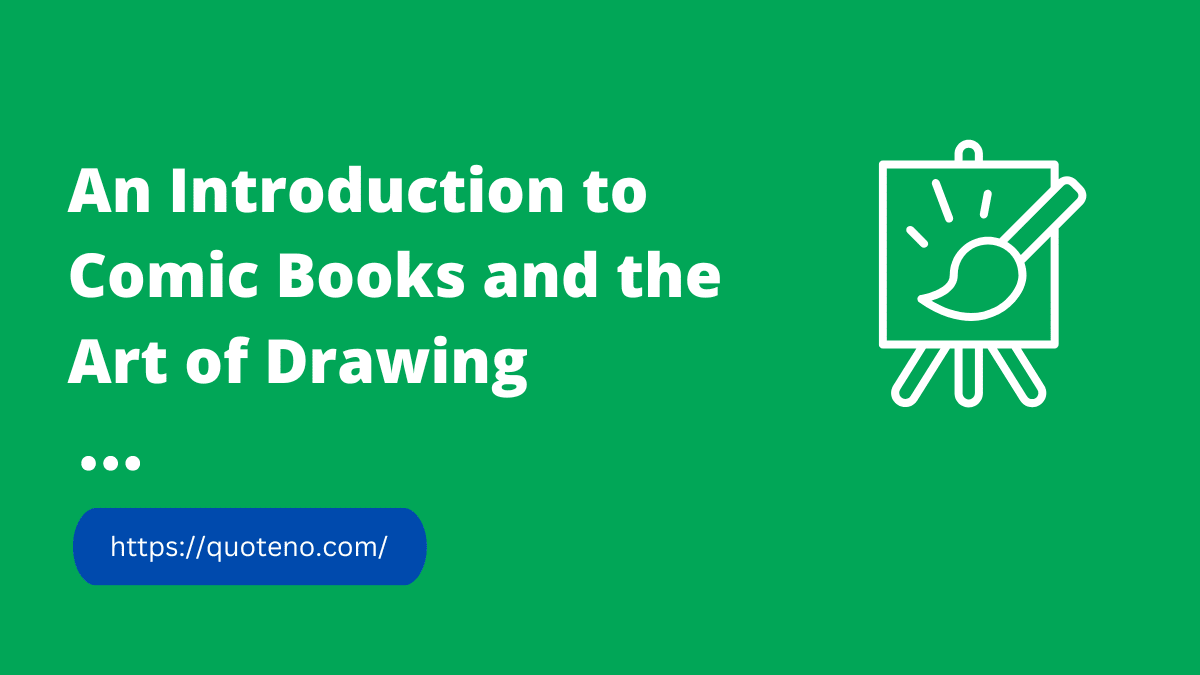Comic books have long captivated readers with their colorful characters, immersive storytelling, and epic battles between heroes and villains.
These iconic characters have become cultural icons, inspiring generations of fans and shaping the landscape of popular culture.
In this article, we will delve into the world of comic books and the art of drawing, with a particular focus on the fascinating realm of heroes and villains.
Table of Contents
The Basics of Comic Book Art
To embark on the journey of creating captivating comic book stories, it is essential to understand the fundamentals of comic book art. This includes mastering the panel layout and sequential storytelling techniques that give life to the narrative.
Exploring different styles and techniques employed by comic book artists allows aspiring creators to develop their unique artistic voices.
Additionally, familiarizing oneself with the tools and materials commonly used in comic book art sets the foundation for creating visually stunning artwork.
Creating Memorable Heroes
Heroes are the heart and soul of comic book stories, captivating readers with their bravery, noble intentions, and unique abilities. Crafting a memorable hero involves more than just their appearance; it requires thoughtful character design and development.
Artists must consider visual elements such as costume design, body language, and facial expressions to convey the hero’s personality and powers effectively. By infusing relatability and uniqueness into hero characters, artists can create enduring icons that resonate with audiences.
Crafting Compelling Villains
Behind every great hero lies a formidable villain. Villains add depth and complexity to comic book narratives, challenging the heroes and providing the catalyst for exciting conflicts.
Crafting compelling villains involves delving into their motivations, background stories, and visual representation. Villains often possess distinctive visual cues that communicate their sinister nature, such as menacing features, dark color schemes, and intimidating body language.
The art of designing villains lies in striking a balance between making them captivating and evoking a sense of dread in readers.
Shining Supporting Characters
Secondary characters play a vital role in comic book narratives, providing support, depth, and additional layers to the story. While heroes and villains take the spotlight, secondary characters offer unique perspectives, comic relief, and intriguing subplots.
Artists have the opportunity to bring these characters to life through their visual representation, capturing their distinctive personalities and traits.
For example, here you can get to know Gwen Stacy, a beloved secondary character known for her pivotal role in Spider-Man’s life and the emotional impact she has had on the comic book world.
By carefully designing secondary characters and incorporating them seamlessly into the story, comic book artists can create a rich and immersive world that expands beyond the central conflict, enriching the overall reading experience.
Dynamic Action and Posing
Comic book art thrives on dynamic action and visually striking poses. Capturing movement and energy in drawings breathes life into the characters and their battles. Artists employ techniques such as foreshortening, exaggeration, and anatomical understanding to create impactful action scenes.
By carefully considering composition, perspective, and the flow of panels, artists can guide readers’ eyes through the action, heightening the excitement and immersion in the story.
Storytelling through Panels and Layouts
The arrangement of panels and the pacing of a comic book play crucial roles in conveying the story effectively. Artists must carefully plan the placement and size of panels to control the narrative flow, emphasizing important moments and building tension.
Transitions between panels should be seamless, allowing readers to follow the story effortlessly. Balancing the interplay between visuals and text enhances the storytelling, ensuring a harmonious blend that engages readers on multiple levels.
The Art of Inking and Coloring
In comic book art, inking is the process of defining and refining the pencil sketches, adding depth, and refining the visual elements. Artists can choose from various inking styles, such as bold and heavy lines or delicate and intricate linework, to establish the desired mood and aesthetic.
Furthermore, coloring plays a pivotal role in evoking emotions, setting the atmosphere, and enhancing the overall visual impact of the artwork. Artists employ shading, lighting effects, and color theory to breathe life into their creations, adding depth and dimension to the characters and their surroundings.
Lettering and Dialogue
Lettering and dialogue are crucial components of comic book art, helping to convey character voices, emotions, and story beats. Proper placement of speech bubbles and sound effects ensures clarity and readability, guiding readers through the narrative.
Thoughtfully crafted dialogue adds depth to characters, showcases their personalities, and advances the story. The art of lettering goes beyond mere transcription; it involves capturing the rhythm and tone of the dialogue, and seamlessly integrating it with the artwork.
Honing Your Craft: Practice and Resources
Becoming a proficient comic book artist requires dedicated practice and continuous improvement. Artists should embrace the iterative nature of their craft, learning from each drawing and seeking opportunities to refine their skills.
Online resources, tutorials, and artist communities offer invaluable guidance and feedback for aspiring comic book artists. Engaging with fellow artists and seeking constructive criticism aids in honing one’s craft and fostering growth as a creator.
Conclusion
Heroes and villains are the lifeblood of comic book storytelling, captivating readers with their extraordinary abilities, intricate relationships, and timeless conflicts. Aspiring comic book artists can embark on an exciting journey by mastering the art of drawing heroes and villains.
By understanding the fundamentals of comic book art, honing their skills, and exploring the dynamic interplay between heroes and villains, artists have the power to create immersive and unforgettable stories that will captivate audiences for generations to come.

